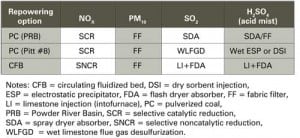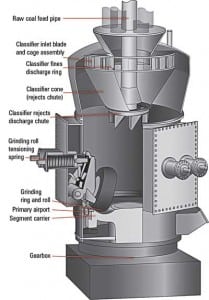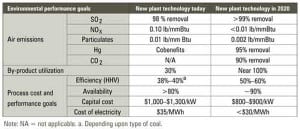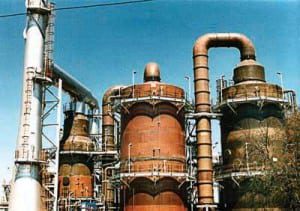In This Issue
-
O&M
Project Planning: Repowering or Replacement: What Is the Solution?
Between 1998 and 2002 the U.S. experienced an unprecedented power plant construction boom that consisted mostly of gas-fired, combustion turbine – based power plants. This surge in power plant construction had several driving forces, including electric power deregulation, the emergence of non-utility power producers, a sustained period of plentiful and inexpensive natural gas, and the […]
-
Coal
Case Histories: Pulverizer Upgrades Are Reducing Fuel Costs
St. Johns River Power Park (SJRPP) is a two-boiler, 2 x 660-MW station jointly owned by JEA (formerly Jacksonville Electric Authority) and Florida Power & Light (FPL). JEA is the plant operator. The Foster Wheeler boilers went into commercial operation in 1987 and 1988. Each boiler has seven OEM vertical spindle pulverizers (mills) and 28 […]
-
Coal
Clean Coal: Clean Coal Technology Is Not an Oxymoron
In the late 1980s, the U.S. Department of Energy (DOE), in conjunction with industry and state agencies, started the Clean Coal Technology (CCT) program. The aim of the CCT program was to develop technologies, increase efficiency, and reduce the environmental effects of burning coal in power plants. Today, pollution controls for new and existing plants […]
-
Coal
Coal Users Community: Capitalizing on Coal: The Challenges and Opportunities
Demand for energy in America continues to grow. So too does the challenge of generating it in a reliable, affordable, and an environmentally sensitive manner. Given the U.S.’s abundant coal reserves, the nation’s electric utilities are pursuing a variety of strategies to keep coal a key fuel source for generating electricity. Developing Technologies One approach […]
-
Coal
Coal Users Community: NCTA helping to resolve coal transportation infrastructure problems
The Mission of the National Coal Transportation Association (NCTA) is to provide education and facilitation for the resolution of coal transportation issues in order to serve the needs of the general public, industry, and all modes of transportation. This is accomplished through the sponsoring of educational forums and by providing opportunities for the lawful exchange […]
-
Coal
Controls: Building the Digital Power Plant of the Future
History has shown that the proper deployment of automation on new construction projects can make the difference between a moderate performer and an industry-leading unit, between average financial results and accelerated profitability. Given the magnitude of a new coal-fired plant construction project, automation is often viewed as just one of the many components essential to […]
-
Coal
Cover Story: Coal-fired Electric Power Capacity Continues to Increase
In the U.S. electric power industry, coal is making a comeback as a fuel of choice for new generation projects. During the construction boom that occurred from 1999 to 2003 about 90% of new electric generation utilized natural gas – fired combustion turbines. Unfortunately, over the past few years natural gas supplies have tightened and […]
-
Coal
Editorial: Industrial Perspectives
Is the U.S. supply of coal sufficient to meet the increased demand for coal-fired generation? With the increasing demand for coal to generate electricity, the big question is, How reliable is the supply and transportation of the fuel? Currently, Industrial Info Resources (IIR) is tracking 185 new coal-fired power projects, and if all were to […]
-
O&M
Projects
Kansas City Power & Light Installing SCR at La Cygne Generating Station Kansas City Power & Light (KCP&L), a subsidiary of Great Plains Energy, has awarded The Babcock & Wilcox Company (B&W) a contract for the installation of new emissions control equipment on Unit 1 at its La Cygne Generating Station. When completed, the selective […]
-
Coal
Pollution-Control Technologies: Multi-Pollutant Removal Systems Are a Clean Coal Technology
The first power plants were built about 130 years ago. Coal was then, and is still today, the major fuel used for power generation. Currently, about 1,400 pulverized coal – fired units, with an average age of more than 30 years, generate over 50% of U.S. electric power. The use of low-sulfur coal and improved […]







